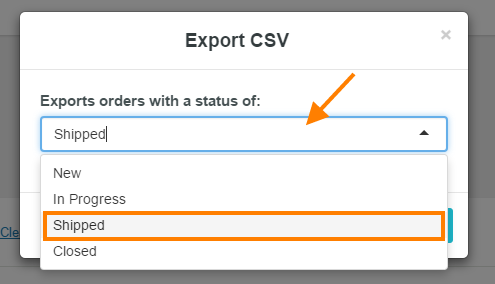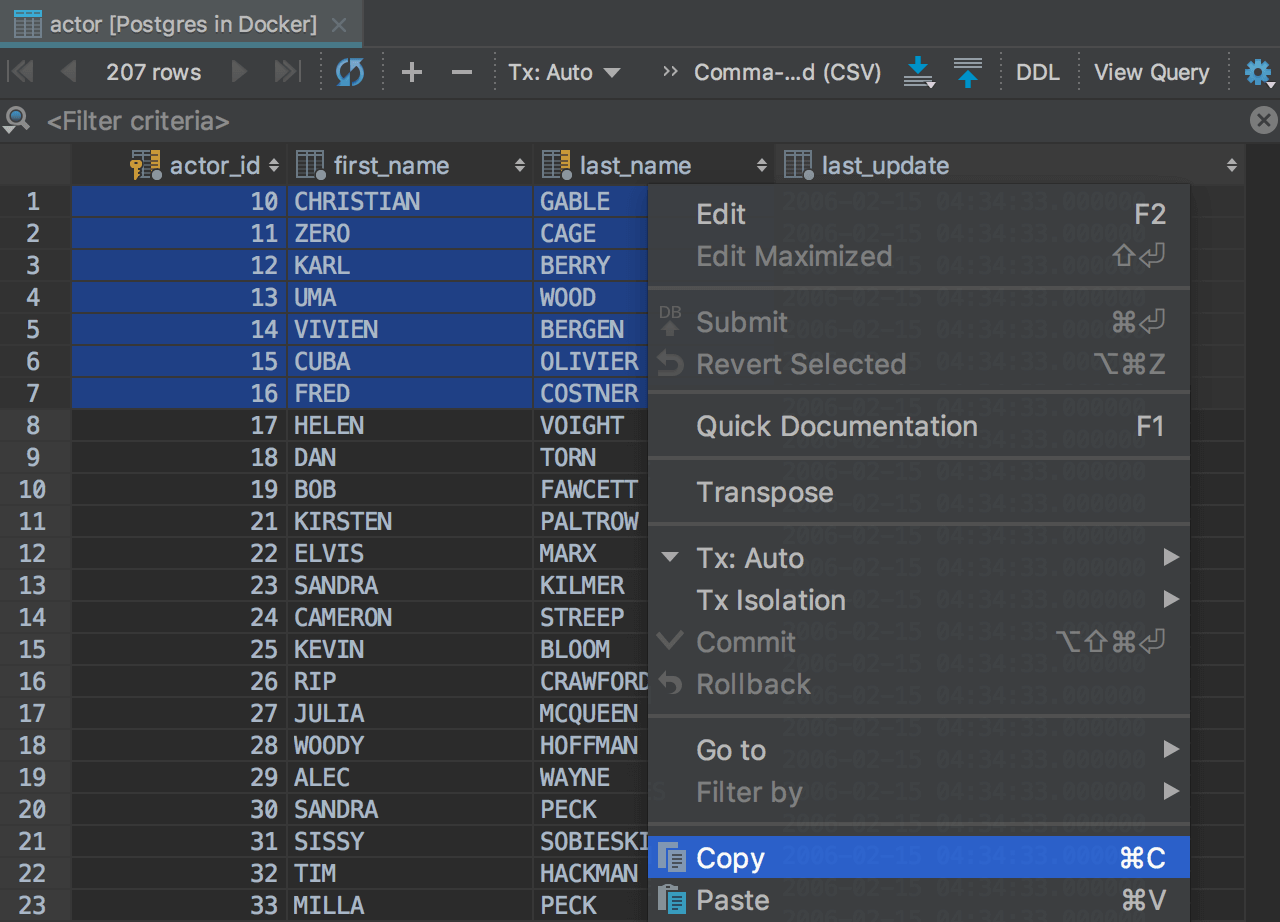
To export data from multiple database objects to files, select and right-click the objects, then navigate to Import/Export | Export Data to Files.
DATAGRIP EXPORT TO CSV WINDOWS
In the Database Explorer ( View | Tool Windows | Database Explorer), right-click a database object and navigate to Import/Export | Export Data to File. For MongoDB, the default extractor is always JSON.įor more information about data extractors, refer to the corresponding page. The last selected extractor becomes the default one for newly opened editor tabs. You can use a built-in data extractor, configure a custom extractor that is based on CSV or DSV format, and create a custom data extractor using a provided API. Each time you export or copy data, the copied data format is defined by the selected data extractor. If your database stores DDL of the object, you can retrieve DDL from the database by selecting the Request and Copy Original DDL.ĭataGrip uses data extractors to export data in various formats to a file or the clipboard. In the Database Explorer ( View | Tool Windows | Database Explorer), right-click a database object and select SQL Scripts | Generate DDL to Clipboard. Generate a DDL definition to the clipboard In the Database Explorer ( View | Tool Windows | Database Explorer), right-click a database object and select SQL Scripts | Generate DDL to Query Console. Generate a DDL definition to the query console
DATAGRIP EXPORT TO CSV GENERATOR
In the SQL Generator tool window, click the File Output Options icon ( ).įrom the Layout list, select a method that you want to use:įile per object by schema: generates a set of SQL files sorted in folders by schemas.įile per object by schema and database: generates a set of SQL files sorted in folders by schemas and databases.įile per object: generates a set of SQL files.įile per object with order: generates a numbered set of SQL files. In the Database Explorer ( View | Tool Windows | Database Explorer), right-click a database object (for example, a table) and select SQL Scripts | SQL Generator Control+Alt+G.

Change output settings of the SQL Generator In MySQL and MariaDB, select Skip DEFINER clause to skip this clause when you generate DDL for a procedure or a function. The DEFINER clause specifies the security context (access privileges) for the routine execution. On the right toolbar, you can find the following controls: In the Database Explorer ( View | Tool Windows | Database Explorer), right-click a database object and select SQL Scripts | SQL Generator… Control+Alt+G. Generate DDL definitions for database objects The following video shows how you can generate SQL for existing objects.


In DataGrip, you can generate data definition structures by using shortcuts with predefined settings or by using the SQL Generator and customize the export settings. Export object structuresĭata definition language (DDL) defines the structure of a database, including rows, columns, tables, indexes, and other elements.
DATAGRIP EXPORT TO CSV FULL
For more information, see Create a full data dump for MySQL and PostgreSQL. The full data dump includes structures of all database objects and data of these objects in a single file. The full data dump is available for PostgreSQL and MySQL with the help of mysqldump and pg_dump. It means that you can export a structure of a table or a view and then export data from these objects. In DataGrip, you export object structures and data separately. You can select a predefined data extractor or create your own. Also, you can export data in TXT, CSV, JSON, XML, Markdown, Excel, and other formats. These methods include usage of various generators, data extractors, and shortcuts. You can use a variety of methods to export data and object structures from your databases.


 0 kommentar(er)
0 kommentar(er)
